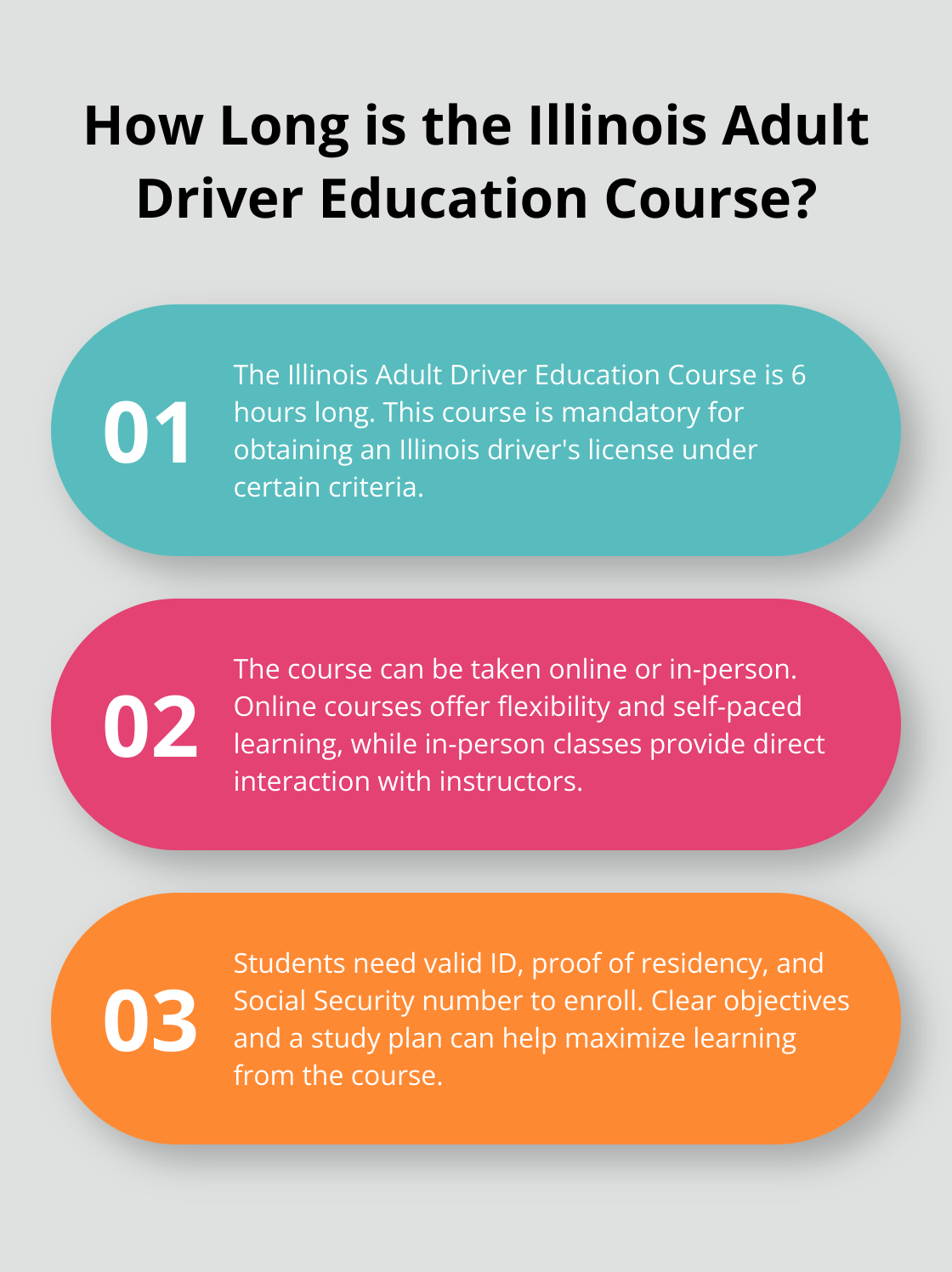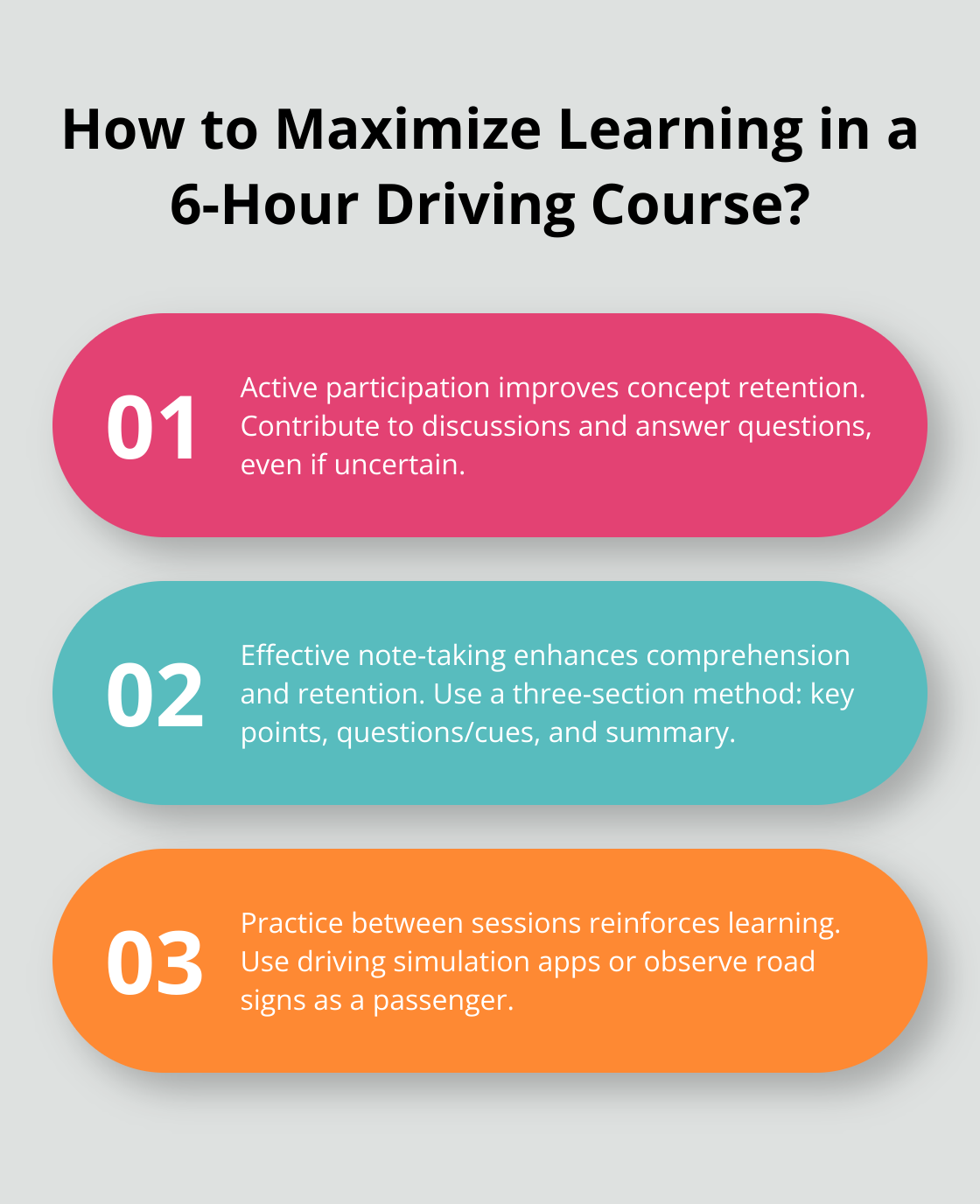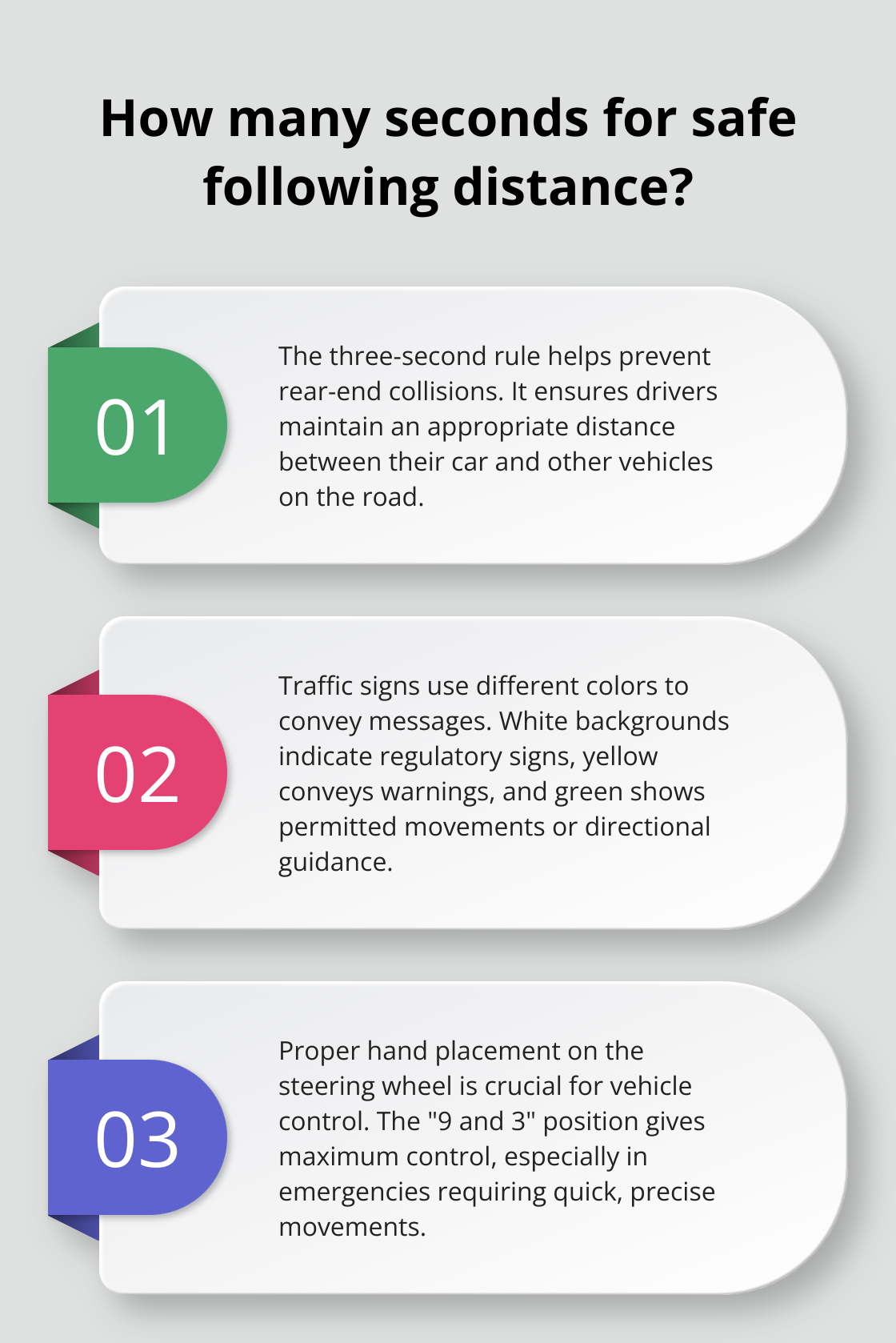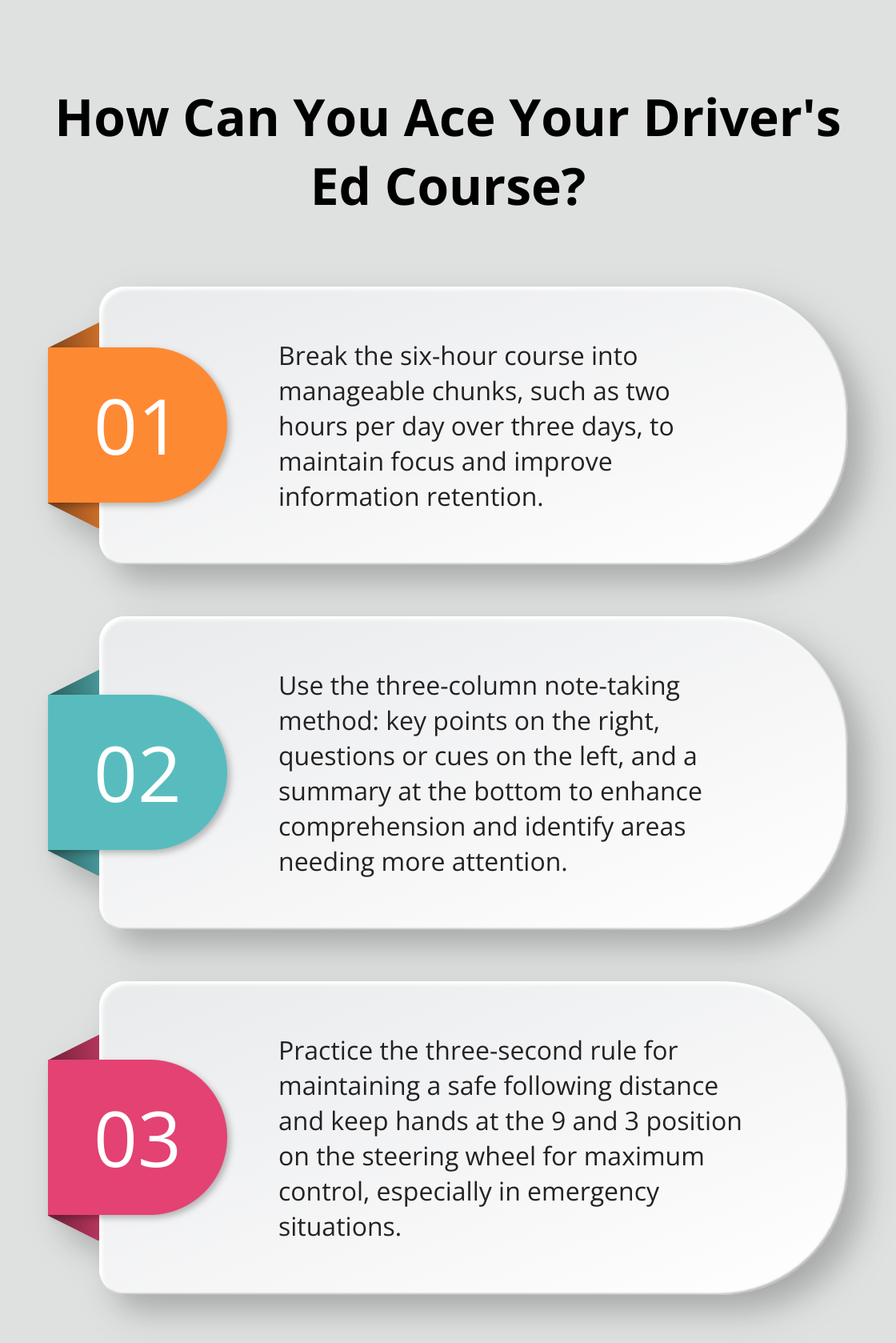At The Wiser Driver Driving School, we know that completing a six-hour driving course is a big step towards becoming a safe and confident driver.
This comprehensive guide will walk you through the process of successfully finishing your course, from preparation to key topics covered.
We’ll share practical tips to help you make the most of your learning experience and set you up for success on the road.
How to Prepare for Your Six-Hour Driving Course
Research State Requirements
Start by understanding your state’s specific driver education requirements. In Illinois, you MUST take a six (6) hour Adult Driver Education Course to obtain an Illinois driver’s license if you meet certain criteria. Check your local Department of Motor Vehicles (DMV) website for the most current information.
Select the Ideal Course Format
Decide between in-person and online courses. Online options provide flexibility, allowing you to study at your own pace. Many students prefer this format for its convenience. In-person classes offer direct interaction with instructors, which some find beneficial for immediate question-answering.
Collect Required Documents
Prepare all necessary documents before your course begins. You’ll typically need:
- A valid form of identification (driver’s license or state ID)
- Proof of residency (utility bills or bank statements often suffice)
- Social Security number

Having these ready will speed up your enrollment process and prevent delays in receiving your completion certificate.
Establish Clear Objectives
Define what you want to achieve from the course. Do you aim to pass your driver’s test on the first attempt? Or perhaps you want to reduce your insurance premiums? (Insurance companies may offer discounts for completing defensive driving courses.) Clear objectives will help you focus on the most relevant information during your course.
Plan Your Study Schedule
For online courses, create a study plan. The flexibility of online learning can sometimes lead to procrastination. Try to break the six hours into manageable chunks (perhaps two hours per day over three days). This approach helps maintain focus and improves information retention.
These preparation steps will position you for success in your six-hour driving course. At The Wiser Driver Driving School, we offer comprehensive programs designed for drivers of all ages, including state-required courses and personalized driving lessons. Our next section will explore how to maximize your learning experience during the course.
How to Maximize Your Learning in a Six-Hour Driving Course
At The Wiser Driver Driving School, we’ve observed numerous students complete our six-hour driving courses. The most successful students employ specific strategies to enhance their learning experience. Here’s how you can optimize your time and effort:
Participate Actively in Every Session
Don’t become a passive listener. Involve yourself with the material actively. For in-person classes, contribute to discussions. In online courses, use available forums or chat features. Active learning techniques have been found to be quite effective in improving retention of concepts.

When your instructor poses questions, attempt to answer, even if you’re uncertain. This process strengthens your understanding and identifies areas that require more clarification.
Implement Effective Note-Taking Techniques
Note-taking plays a vital role in information retention. Effective note-taking is crucial for success by improving comprehension and retention of course material.
Apply this method to your driving course:
- Split your note page into three sections: a narrow left column, a wide right column, and a bottom summary area.
- Write key points from the lesson in the right column.
- After the lesson, write questions or cues about the right-column notes in the left column.
- Summarize the main ideas of the page in the bottom section.
This approach encourages active review and helps you pinpoint areas that need more attention.
Practice Between Sessions
If your six-hour course spans multiple days, use the breaks to apply your new knowledge. For instance, after a lesson on road signs, pay extra attention to signs during your next car ride (as a passenger, of course). This real-world application cements the information in your memory.
You can also use driving simulation apps or games to practice decision-making skills in a safe, virtual environment. While these can’t substitute real driving experience, they reinforce concepts learned in your course.
Ask Questions and Seek Clarification
Don’t hesitate to ask questions during your course. Instructors at The Wiser Driver Driving School (and other reputable schools) welcome questions as they indicate engagement and a desire to learn. If you’re unsure about a concept or need additional examples, speak up. Your question might help other students who have the same uncertainty but are too shy to ask.
Review and Reflect
After each session, take time to review your notes and reflect on what you’ve learned. Try to connect new information with your existing knowledge or experiences. This process, known as active recall, strengthens neural pathways and improves long-term retention of information.
As we move forward, let’s explore the key topics typically covered in a six-hour driving course. Understanding these areas will help you prepare mentally for the wealth of information you’ll encounter.
What Six-Hour Driving Courses Cover
Six-hour driving courses provide essential knowledge for safe and confident driving. These courses pack a wealth of information into a compact timeframe, focusing on critical aspects of road safety and vehicle operation.
Traffic Laws and Road Signs
Traffic laws and road signs form the foundation of safe driving. Courses explain the meanings behind various road signs and markings, and detail right-of-way rules and speed limits. For instance, white backgrounds indicate regulatory signs, yellow conveys a general warning message, and green shows permitted traffic movements or directional guidance. Courses also cover lesser-known laws, such as the “Move Over” law, which requires drivers to change lanes or slow down when approaching stopped emergency vehicles.
Defensive Driving Techniques
Defensive driving involves anticipating potential hazards and knowing how to avoid them. Courses teach specific techniques like the three-second rule for maintaining a safe following distance. This rule helps prevent rear-end collisions by ensuring drivers maintain an appropriate distance between their car and other vehicles on the road. Courses also cover techniques for scanning the road ahead, checking blind spots, and adjusting driving to different weather conditions.
Emergency Situations and Vehicle Handling
Proper vehicle handling in emergencies can save lives. Courses cover what to do if brakes fail, how to correct a skid, and the proper technique for emergency stops. They also teach about the dangers of overcorrecting and how to safely maneuver a vehicle to avoid obstacles. One key tip emphasizes keeping both hands on the steering wheel in the “9 and 3” position (which gives maximum control over the vehicle, especially in emergencies where quick, precise movements become necessary).
Distracted and Impaired Driving Awareness
Courses highlight the dangers of distracted and impaired driving with eye-opening statistics. Courses also discuss the effects of alcohol and drugs (including legal medications) on driving ability, aiming to help drivers make informed decisions and develop habits that prioritize safety for themselves and others on the road.
Practical Application of Knowledge
Throughout these courses, the focus remains on practical, actionable information that drivers can apply immediately. Understanding the “why” behind driving rules and best practices leads to better retention and application of these critical skills. The Wiser Driver Driving School, like other reputable schools, designs its courses to cover these essential topics comprehensively, ensuring that students receive a well-rounded education in safe driving practices.

Final Thoughts
A six-hour driving course provides essential knowledge for safer, more confident driving. The course covers traffic laws, defensive techniques, and hazard awareness. Students who engage actively with the material and practice between sessions build a strong foundation for their driving journey.

Continuous skill development remains important after course completion. Regular application of learned concepts reinforces good driving habits. The next steps typically involve applying for a driver’s license or permit, which may require passing written and practical exams.
The Wiser Driver Driving School offers comprehensive programs for drivers of all ages. These include state-required courses, personalized lessons, and road testing services. Safe driving requires a lifelong commitment to staying informed about traffic laws and prioritizing safety on the road.



